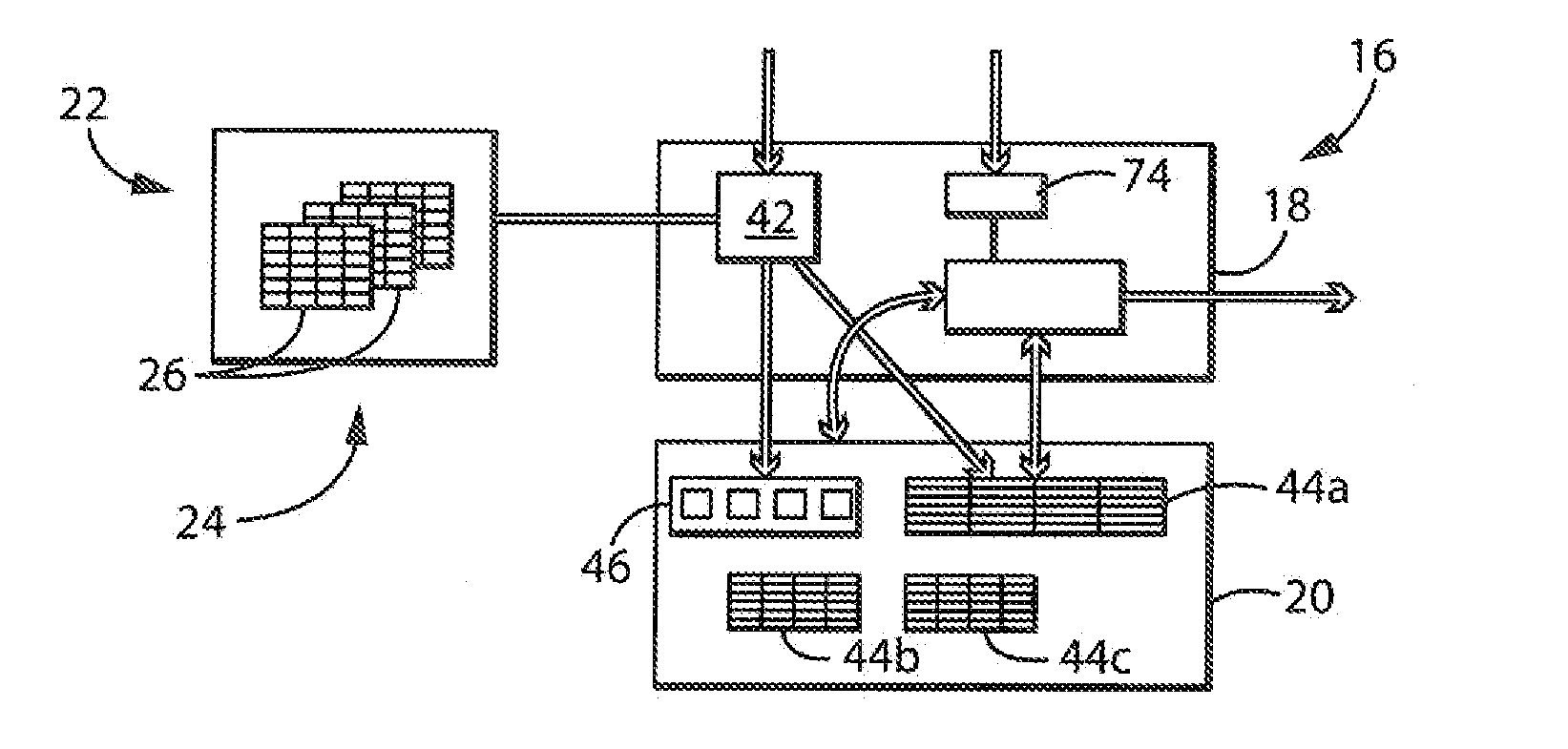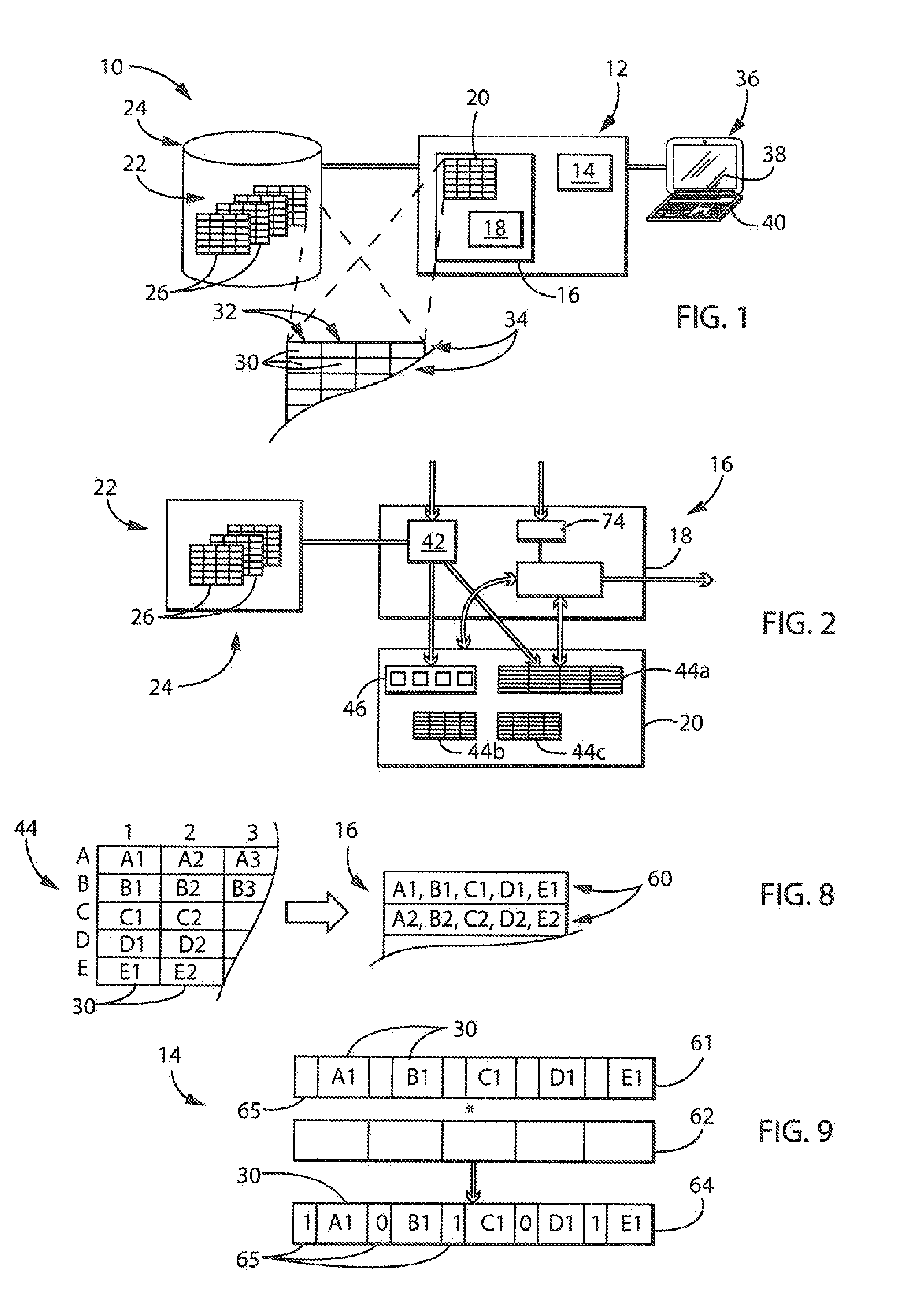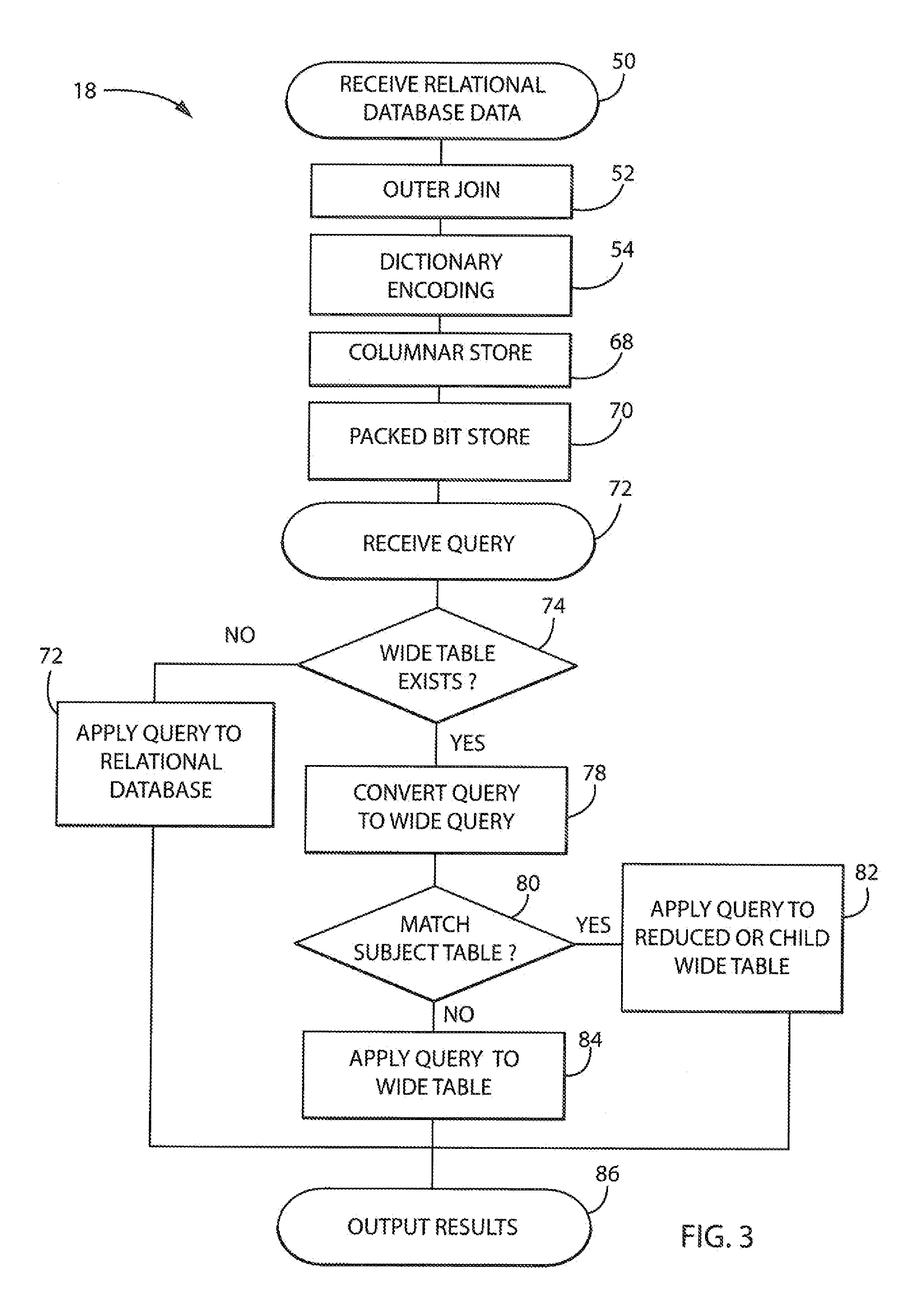Database system with highly denormalized database structure
a database system and database structure technology, applied in relational databases, database models, instruments, etc., can solve the problems of increasing the amount of data and substantially slowing so as to accelerate the query, slow down the scan rate of a query, and increase the amount of data
- Summary
- Abstract
- Description
- Claims
- Application Information
AI Technical Summary
Benefits of technology
Problems solved by technology
Method used
Image
Examples
example 1
[0106]Consider the query Q2 below. The RA expression for this query is shown as q′2.
[0107]Q2: SELECT DISTINCT ename
[0108]FROM Customer C, Buy B, Product P. Nation N1, Nation N2, Region R
[0109]WHERE C.cid=B.cid AND B.pid=P.pid[0110]AND C.nid=N1.nid[0111]AND N1.rid=R.rid[0112]AND P.nid=N2.nid[0113]AND N2.rid=R.rid[0114]AND N1.nname≠N2.nname[0115]AND C.gender=‘M’ AND R.rname=‘America’
q′2:πcname(σN1.nname≠N2.nname((σrname=‘America’(R)(NJ)N1(NJ)σgender=‘M’(C(NJ)B)(NJ)Bpid=P.pid̂N2.rid=R.rid(P(NJ)N2))) (eq. 3)
[0116]The query graph for Q2 is shown in FIG. 10. The table variables involved in non-FKJ predicates are cross-hatched. The edge from the N1 vertex to the Region vertex (marked as a dashed arc) is removed as there is another edge entering the Region vertex, and a new condition cnrid=pnrid is therefore added. To run Q2 on the example database, we select the BuyWT wide table, since the schema tree of CustomerWT wide table does not cover the query graph of Q2. The regular conditions, C...
example 2
[0120]As an example of this approach, consider query Q3 below. This query finds the names of the nations that produce products, except for coffee, that are available in quantities that are greater than the number of male customers who have successfully purchased this product. This query has two levels of nested subqueries: the first subquery is nested under the IN keyword, and the second subquery is nested under the arithmetic operator<.
Q3: SELECT DISTINCT Nation.nnameFROM Nation NWHERE N.nid IN ( SELECT P.nid FROM Product P WHERE P.name≠′Coffee′ AND P.quantity > ( SELECT COUNT(DISTINCT cid) FROM Buy B, Customer C WHERE B.pid = P.pid AND B.cid = C.cid AND B.status = ′S′AND C.gender = ′M′))
[0121]Applying Dayal's methods on Q3 produces q′3 and a set of other RA expressions. The translator 74 first pushes the semi join in q′3 ahead of the aggregation, transforming q′3 to q″3. Then, we use the method for single block queries to translate q″3. The query graph of q″3 is a subgraph of ...
example 3
[0126]The example query Q4 computes the count of products that are available in a quantity greater than 3, for each nation. Notice that of the two wide tables in the SMW (i.e. BuyWT and CustomerWT), only the BuyWT wide table “covers” the query graph of this query, and thus can be used to answer this query. Since the table Buy is not involved in this query, Q4 is treated as a child table query. By applying the method for translating single block queries, Q4 is rewritten as an intermediate RA expression q′4 (note that q′4 is not equivalent to the original query Q4), which is then further transformed to an RA expression q4.
[0127]Q4: SELECT N.nname, COUNT(*)
[0128]FROM Product P, Nation N
[0129]WHERE P.nid=N.nid AND P.quantity>3.00
[0130]GROUP BY N.nname
q′4:γpnname;Count(*)(σquantity>3:00(BuyWT)) (eq. 11)
q4:γpnname;Count(*)(πpid;pnname(σquantity>3:00(BuyWT))) (eq. 12)
[0131]The use of outer joins is also critical to obtain correct query results for child table queries. The relationa...
PUM
 Login to View More
Login to View More Abstract
Description
Claims
Application Information
 Login to View More
Login to View More - R&D
- Intellectual Property
- Life Sciences
- Materials
- Tech Scout
- Unparalleled Data Quality
- Higher Quality Content
- 60% Fewer Hallucinations
Browse by: Latest US Patents, China's latest patents, Technical Efficacy Thesaurus, Application Domain, Technology Topic, Popular Technical Reports.
© 2025 PatSnap. All rights reserved.Legal|Privacy policy|Modern Slavery Act Transparency Statement|Sitemap|About US| Contact US: help@patsnap.com



